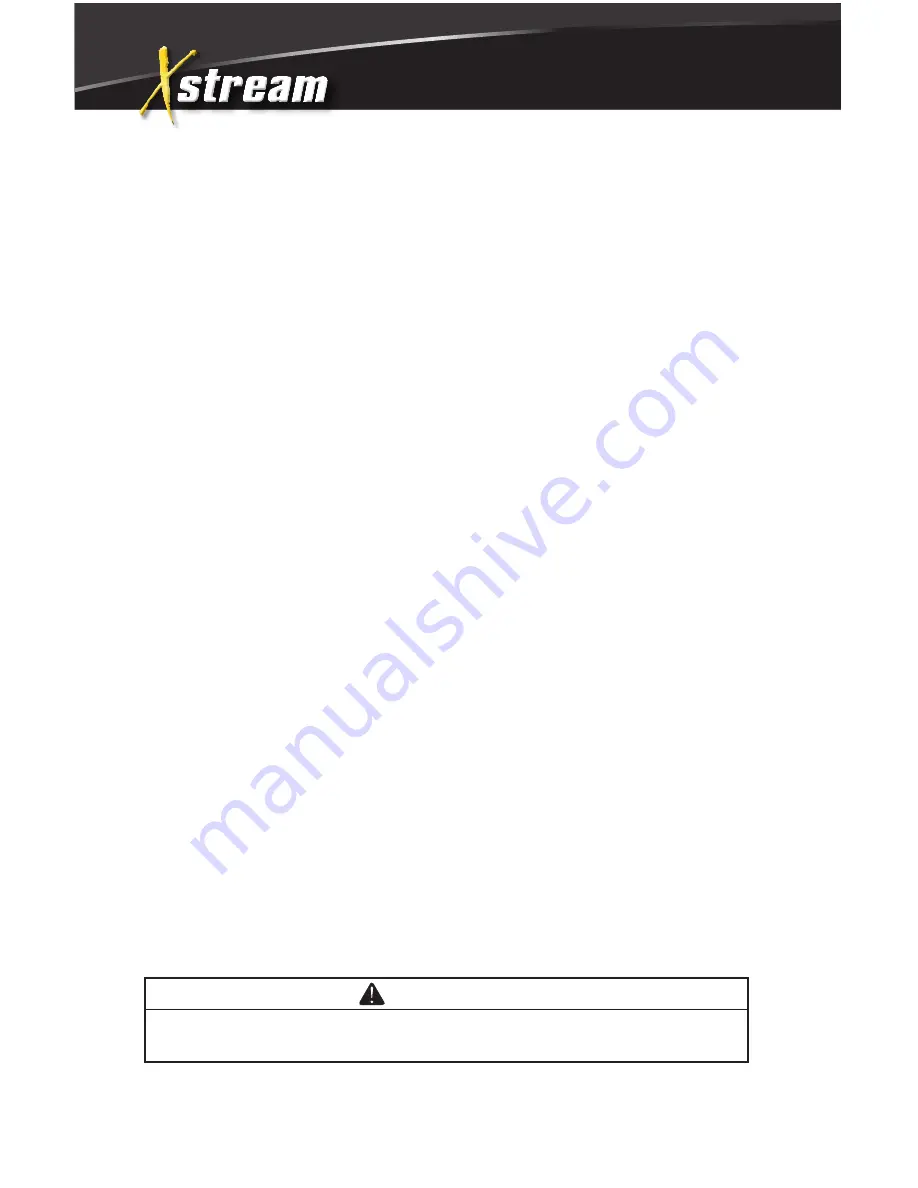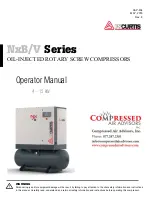
16
Guidelines
Locate runaways from the main header close to the point of application.
Take air off the top of the header to prevent carryover of condensed
moisture to tools.
Slope piping so that it drains toward a drop leg or moisture trap away
from the compressor.
Operation
Every Compressed Air Systems LLC compressor has been operated
and thoroughly tested at the factory prior to shipment. The test assures
that the compressor will deliver its rated capacity and is in good working
order. However, there is the possibility that damage may occur in
shipping. For this reason, it is recommended that the unit be carefully
inspected for evidence of damage or malfunction before installation
and during the first hours of operation
Preparation for Initial Start-Up
1. Pull the main disconnect switch and ensure that there is no power
to the unit.
2. Review the installation instructions to see that everything is complete.
3. Inspect for visible signs of damage that could have happened during
shipment or installation.
4. Make certain protective coverings required for shipment or painting
are removed from the compressor.
5. Fill the sump to the proper oil level. Do not overfill, if it is, drain to
proper level. Tighten the fill cap securely.
6. Reconnect the main disconnect.
7. Refer to control section and check out panel components.
8. “Jog” the motor (press start and stop in quick succession) and check
for the correct direction of rotation. Reverse LS1 and L2 connections
if incorrect
9. Start the unit and run for several minutes, then shutdown. Check the
oil level and add, if necessary, to compensate for filling the system.
10. Begin normal operation
WARNING
Reverse rotation will cause air end damage. Exchange leads L1 and L2, if
reverse rotation.
guidelines
















































